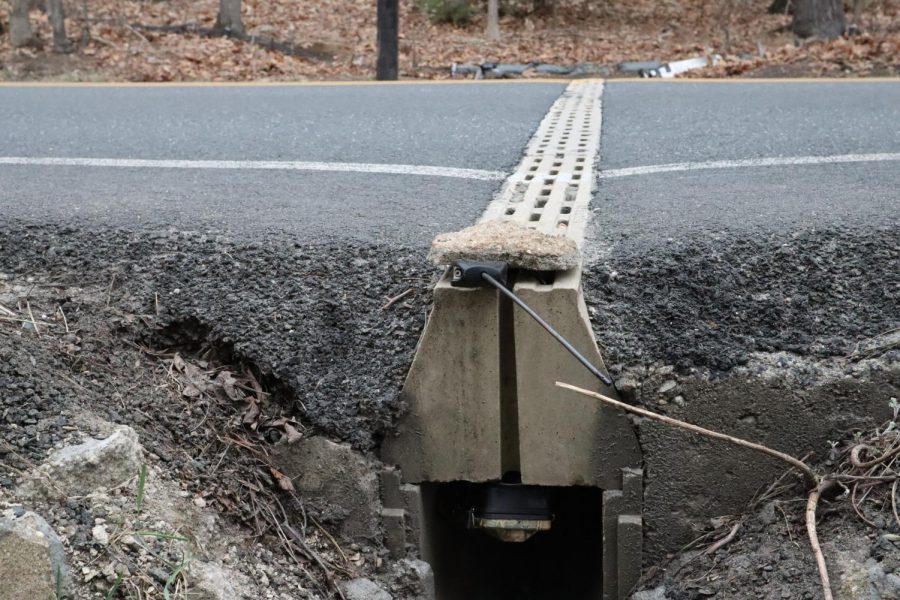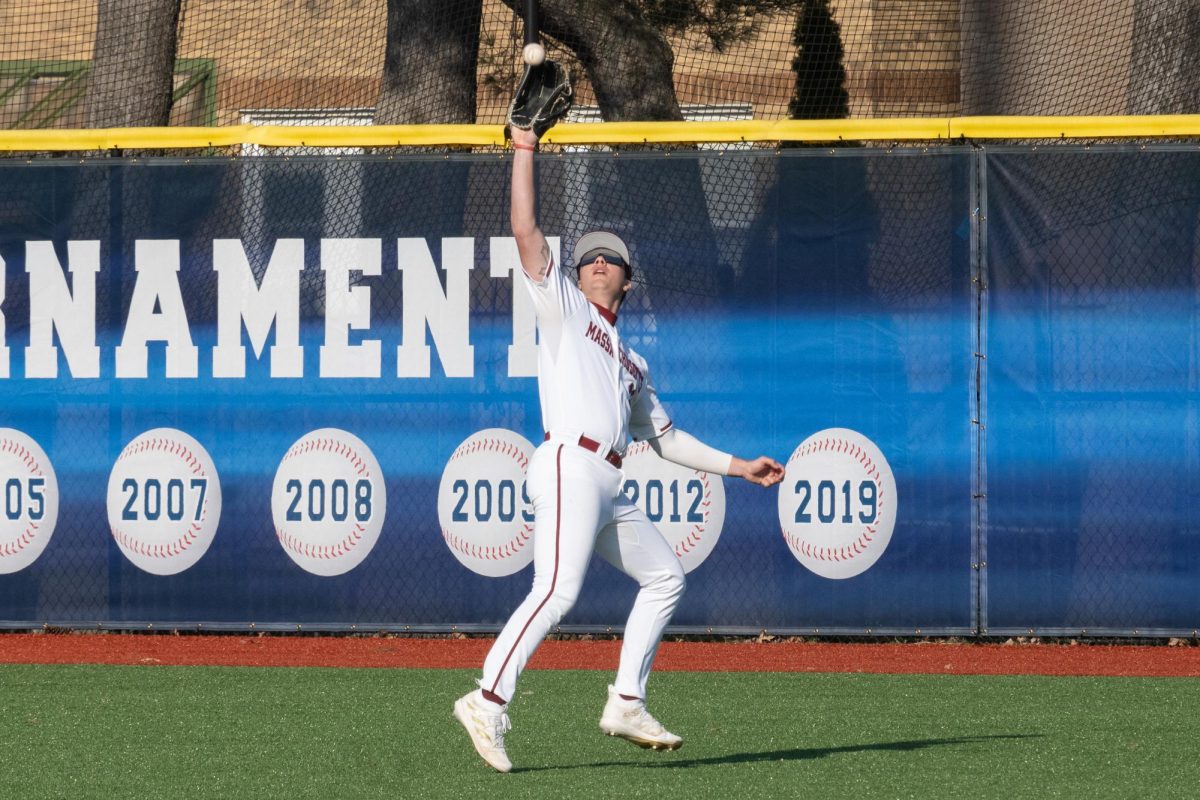On the first rainy night of the spring season, Henry Street in Amherst is closed off to allow for hundreds of spotted salamanders to migrate through man-made tunnels to lay their eggs.
Every year, Amherst citizens and college students witness the salamander crossings through cold, pouring rain with little to no light, except for red fluorescent head lamps. The aura is one of lightheartedness and quiet anticipation as people will wait up to 30 minutes to watch salamanders and other amphibians go through the tunnels. Before these tunnels were constructed, it was common for passing traffic to accidentally run over these small creatures, hindering their new population in the coming spring.
Salamanders having trouble migrating due to heavy road traffic was first hugely recognized in 1987. Organizations around the world banded together to find a solution, eventually creating one of the first-ever amphibian road crossing structures in North America.
According to Scott Jackson, an extension professor in the Department of Environmental Conservation at the University of Massachusetts, the Fauna and Flora Preservation Society based in the United Kingdom collaborated with ACO Polymer Products to begin the international planning of amphibian tunnels. Having success in toad tunnels in Europe, the UK society contacted the Massachusetts Audubon Society in the hopes of extending its reach to North America. They began working with advocates in Amherst who had already been saving the salamanders for years on Henry Street, along with graduate students, the Hitchcock Center and the Town of Amherst.
Jackson was one of the graduate students who helped design the tunnels himself, although with little precedent to work off with, several factors had to be accounted for. “The main design questions concerned the entrances to the tunnels and drift fencing that would guide salamanders to the tunnels,” he said.
The most important thing to keep in mind throughout the design process was the safety of the animals themselves. How could they guarantee that the tunnels would stay protected in an environment with high flood potential? “We didn’t want the fences to channel rain runoff into the tunnels, so we initially used plastic mesh as the fencing material,” Jackson said. “We also chose to run the fence out at an angle to better ‘funnel’ salamanders to the tunnels. We designed dry wells under the entrances in an effort to prevent any water that did accumulate from flooding the tunnels.” Since then, the tunnels are maintained by volunteers and continue to accommodate hundreds of salamanders every year.
During the winter, spotted salamanders burrow underground before reaching a physical state known as brumation, which is similar to hibernation in mammals. On the first spring rain during a night that’s above 40 degrees, they emerge with the instinct to find the closest vernal pool, where they spend weeks mating before laying their eggs in the familiar murky waters they call home. Vernal pools can be found on nearly every hiking trail surrounding UMass, with Mount Warner being one of the closest at only a seven minute drive from campus.
Why do people care so much about these salamanders? Spotted salamanders aren’t endangered, however, they’re beginning to diminish from towns like Amherst that tread a thin line between rural and urban. Through their quiet and illusive nature, Amherst residents have grown a soft spot for them through the Henry Street tradition, which inspired other cities to create their own migration tunnels and bridges.
During the 2023 migration this March, there were a few windows where salamanders migrated. Katie Koerten and Jeffrey Mazur are both Environmental Educators at the Hitchcock Center in Amherst who were present during these windows. According to Mazur, this was the first year that local police forces have been involved with stopping traffic, as well as the first year since the Covid-19 pandemic that the migration really picked back up again in the public’s eye.
“There’s always a balance for how many people it makes sense to have come out to see the crossing and help with the crossing, because at some point it becomes less helpful and more dangerous,” Mazur said.
Before the town police got involved, he mentioned it was stressful making sure people could enjoy the experience while being in the middle of the road on a dark and stormy night. Now, however, with the roads closed off, the attention can shift more to education, and of course, the salamanders.
Koerten commented on a misconception with the event. She said that people often believe that there’s only one night you can come to witness it, which is how she says it’s been “branded for a long time.”
“Year after year, we see it’s a handful of medium nights,” she said. “We want to get that message out. It’s not necessarily one night and you miss your chance, there are a couple of nights.”
Koerten and Mazur also wanted to draw attention to the other creatures locals have a chance of seeing, such as the wood frogs, who share similar migration patterns to salamanders and can be found using the tunnels.
“You get a chance to see a creature you usually would never get a chance to see,” Koerten said.
Before the tunnels were made, groups of Amherst volunteers who were nicknamed the “bucket brigade” in the early 1980s would stop traffic and allow salamanders to crawl into buckets before briskly carrying them to the other side of the road. Although volunteering today isn’t as intense as physically handling the salamanders, the Hitchcock Center still needs help every season to maintain the tunnels. In the future, Mazur predicts that volunteers will play bigger roles during the actual migration, being responsible for data collection and safety precautions.
Potential visitors are encouraged to sign up for Hitchcock’s email list on its website to get updates as March and April next year grow closer.
If you’re curious about volunteer opportunities, you can fill out an application on their website and email [email protected]. With help from The Hitchcock Center, its volunteers and local police forces, these common but hard to find creatures will continue to cross the street for years to come.
Amalia Wompa can be reached at [email protected].




















Mark Vargovich • Apr 27, 2023 at 5:54 pm
Nice to see my research and development of this product with ACO has been installed and is working as designed. Congrats on it’s use.